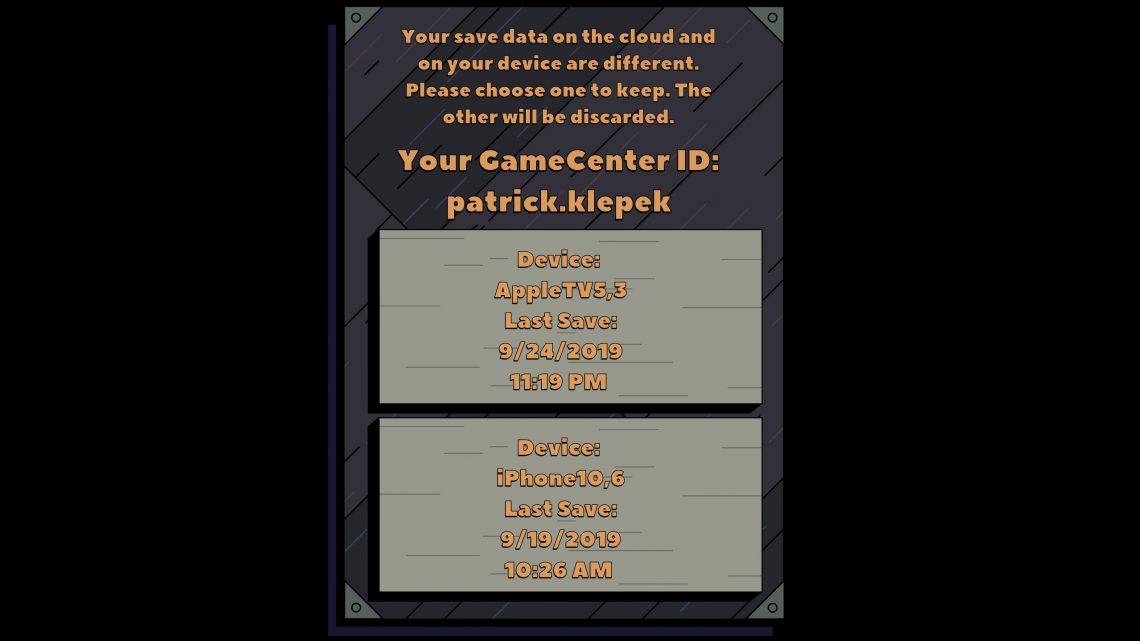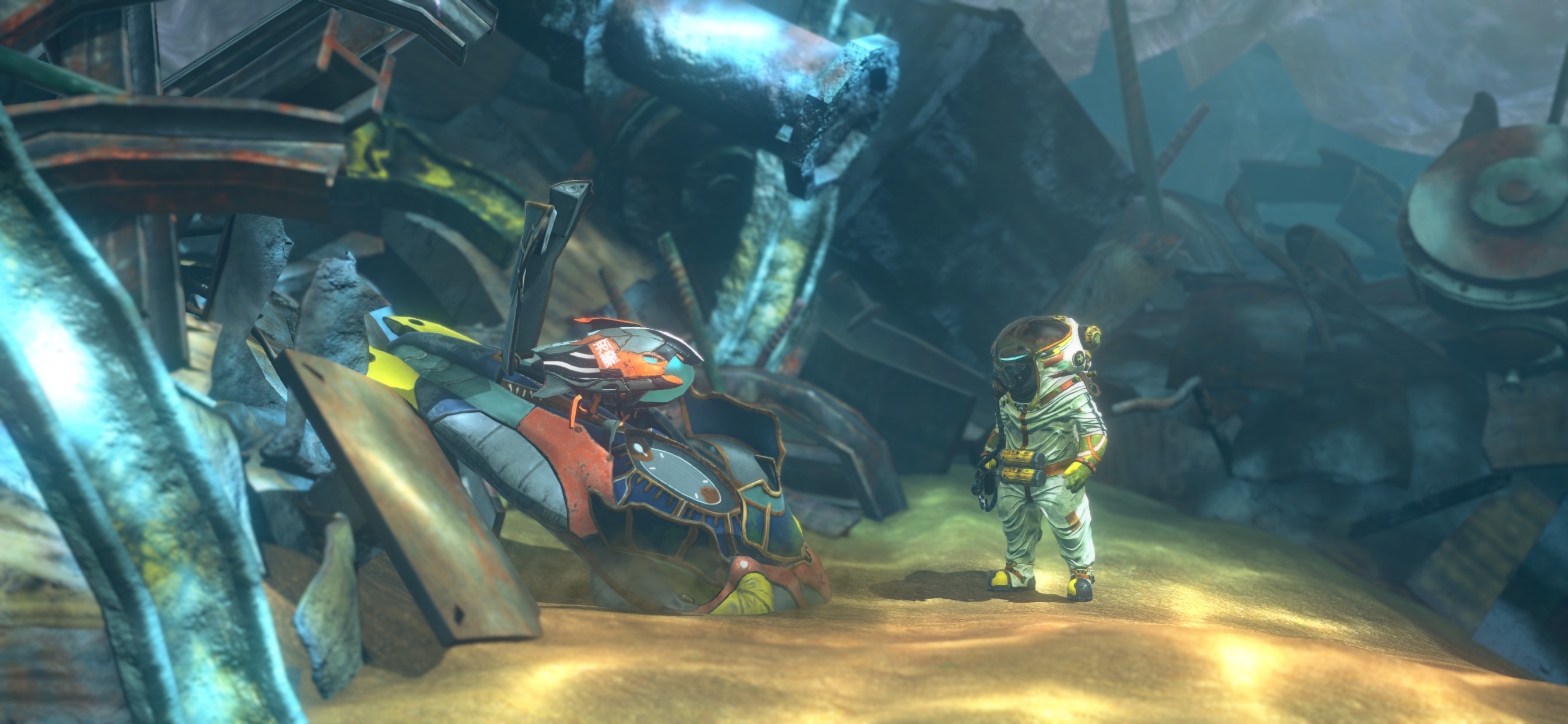
Apple Arcade Promises Games Anywhere and on Any Device. It (Mostly) Works.
September 25, 2019Apple Arcade launched last week with a huge lineup. This week, I’m trying to unpack the service as I spend time with it, and I’m going to highlight five (or so) games, as I work through questions about the service and consider its promise: paying $5 per month for a bunch of games that’ll never ask for another dollar. I took a close look at the delightful puzzler Grindstone ,a game easy to imagine filled with microtransactions, and expressed guilt while playing and discarding games without knowing how developers will ultimately get paid .
When Apple Arcade launched, it was only available on iPhone on iPad. Earlier this week, Apple also rolled out a big update for Apple TV, which means some (but not all) Apple Arcade games can now be downloaded on their surprisingly powerful streaming box. With Apple Arcade coming to Macs in the near future (the current word is “this fall”) anyone who’s deep into Apple’s hardware ecosystem is looking at a future where it’s possible to play a game on one device and then, in theory, seamlessly transition to another—or even the TV.
I’m one of those people. Our house is loaded with Apple devices, new and old. None of our iPads, primarily used to read Twitter and stream Netflix, are getting software updates anymore, which means Apple Arcade isn’t supported. But our Apple TV is ready to roll.
The process of downloading games to my Apple TV was simple enough, but cloud saves are another story. Some games picked up the cloud save from iPhone, letting me seamlessly pivot to playing on the Apple TV without skipping a beat. Other times, it would prompt me to pick a new “Apple TV save” or my old “iPhone save,” even though the “Apple TV save” was clearly building on top of the existing save. Weird? For whatever reason, it was building a new save on top of the old one, without removing it. During those conflicts, I picked the “iPhone save” and everything went smoothly—until I’d move back to the iPhone aaaand:

Same problem. Why isn't there just one save in the cloud?
My last save, in this case, is the Apple TV one? Which is technically also the iPhone one? It’s a little bewildering, but I clicked the Apple TV save and it carried everything over again. I’ve yet to lose any progress, but it’s not hard to imagine blinking and clicking the wrong one. Maybe this is something that’ll get patched out.
The next piece of weirdness involves control schemes. You can use an iPhone or iPad as a remote to control the Apple TV, but it cannot act as a touch screen controller for games on Apple TV. While some games natively support the awful Apple TV remote, which sports a few buttons and a touch pad, others explicitly require syncing a proper bluetooth controller. Many games demanding a controller do not have such requirements on an iPhone or iPad and have touch controls.
For example, when Apple Arcade launched, two of the games I quickly downloaded on my iPhone were Capcom’s underwater Metroid-inspired adventure, Shinsekai: Into the Depths, and Dodge Roll’s Exit the Dungeon, a 2D riff on the extremely popular bullet hell roguelike, Enter the Gungeon. They promised a type of experiences that had been lacking on the App Store for years, the kind of games I’d stopped looking for on mobile and, instead, played on my Switch. Both quickly greeted me with touch controls— Shinsekai deploying futzy virtual analog sticks, Exit the Gungeon relying on inconsistent swipes and taps—and both sucked. It was impossible to tell if the games were good because controlling them was a nightmare.
It was little surprise, then, to find a note by the developers of Exit the Gungeon stating it “was conceived as a game played with a controller, or keyboard and mouse,” even though they were “pleasantly surprised by where we’ve gotten to with the [touch screen controls].”
Neither game suggests a controller is the superior way to play, which is notable because in this latest iOS update, real controllers are an option, and on top of Apple Arcade’s no-more-microtransactions pitch, a potentially big deal for the kinds of games that appear here.
A surprising but funny applause line at Apple’s developer keynote this past June, where the company outlined some of the changes coming to its latest system update, was native support for game controllers produced by Microsoft and Sony. The crowd roared. It was a two-fold admission. One, much in the same way MacBooks do not have a touch interface because a mouse and keyboard works best there, there are some games that simply demand a controller. (Virtual analog sticks and buttons suck.) Two, if Apple was unwilling to produce a best-in-class controller, let people use the ones already sitting in their houses.
While my launch-era Xbox One controller is not capable of syncing with an Apple TV, as support for other devices didn’t kick in until the Xbox One S rolled out, my DualShock 4 has no such problems. I clicked the controller into sync mode, and a few seconds later, it showed up. It’s a little surreal to duck and weave through the Apple TV with a controller made by Sony, but kudos to Apple for making the controller conveniently work outside of games, too.
To be clear, controller support is not exclusive to Apple TV; it works on iPhones and iPads. On Apple TV, though, it feels like you’re booting up an Apple console. The Apple TV was originally pitched that way, but for years, Apple made the ridiculous decision to lock games to their embarrassing remote, which killed gaming on the Apple TV within a few weeks.
One reason I was delighted to see games take off on the App Store so many years back was the promise of new ways to play games, new forms of interactivity. Early on, there was a lot of trash on the iPhone, but for good reason: no one knew how to design games for a touch interface. This was a natural hiccup. Remember how goofy the Wii sounded before Wii Sports? Eventually, a game comes along, stops you in your tracks, and it all makes sense. For me, that was Canabalt, the endless runner about a man leaping from one building to the next, whose jumps were controlled by a single tap on the screen. It was simple and brilliant. (Appropriately, Canabalt developer Adam Saltsman is part of the team behind Overland, a tactical roguelike that’s also part of Apple Arcade’s launch lineup.)
Canabalt was a genre reinvention, a game of the present for the mobile generation, rather than trying to drag in something from the past. What to do with games that already existed? For a long time, virtual sticks and buttons were the answer. Now, it’s real sticks and buttons.
Still, a controller wasn’t enough to save Shinsekai, which seems boring, if not outright bad. The opposite was true of Exit the Gungeon, a game of precision where a DualShock put me at ease. Instead of spending time wondering if my fingers were swiping in the right direction, I could focus on trying to figure out what the heck my gun was doing. (One of Exit the Gungeon’s big hooks is that your gun randomly changes every few minutes. It’s very funny.)

Some games could benefit from some UI tweaks about controller support, though. When I launched Assemble With Care, a game about putting broken objects back together, I was able to interact with a small part of the interface by tapping the X button—but nothing else worked. It was clearly a game meant to be used with the Apple TV remote, but the game never tossed up a prompt to be like “Hey, you’re doing this wrong. Pick up the other thing.”
There’s a flipside of all this, too. Grindstone, which controls like a dream on my phone, can’t do anything with a DualShock. On Apple TV, it only works with that tiny piece of plastic trash. To move around the interface, a giant circle appears, acting as a cumbersome mouse. Things get a little better in the middle of a puzzle, but the remote is imprecise for diagonal movements—a huge part of Grindstone!—and convinced me I wouldn’t play more there.
Because Apple’s various devices use fundamentally different interfaces—mouse and keyboard, touch, a remote that mixes both—it means developers are at confusing crossroads when it comes to designing their games. Do you aim for one interface and sacrifice the other platforms? Come up with a compromise?
But besides these early interface dilemmas (and those cloud save issues), all of this mostly works. Some of this will be worked out, I’m sure, as Apple Arcade matures, and the kinds of games people are responding to changes. For now, the ability to play my games basically whenever is, like the Switch, more than just a novelty: It’s also genuinely useful.
Follow Patrick on Twitter. If you've got any Apple Arcade recommendations, drop an email: patrick.klepek@vice.com. He's also available privately on Signal.


